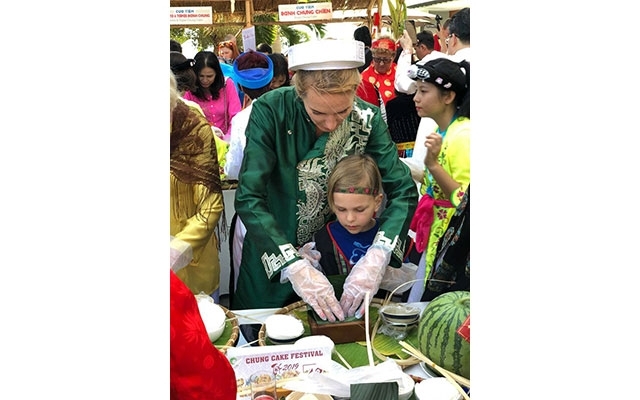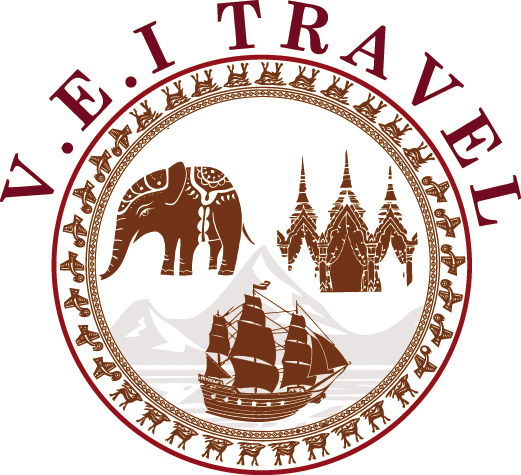
In the growing trend of diversifying tourism demands, the cuisine not only plays a role in serving tourists' food, but is also identified as one of the main goals of the trips.
According to the World Tourism Organisation (UNWTO)’s Global Report on Food Tourism, the average traveler spends about one-third of their vacation budget on cuisine. At the same time, more than 80% of the surveyed tourism agencies identified culinary tourism as a strategic factor for the destination, an important driving force for tourism development. In addition to enjoying, bringing a different taste experience, cuisine also helps visitors feel the unique indigenous culture of each region and locality, thereby enhancing the attraction of the destination. For countries with diverse and attractive cuisines, it can be said ignoring taking advantage of food means ignoring "gold mines" to develop tourism. Food tourism is a great opportunity to promote the local and national economy, create conditions to increase the value chain in agriculture, food production and processing, while preserve and promote the national culture to the world. Over the years, the culinary heritage formed over thousands of years of Vietnam has captivated many foreign tourists when visiting Vietnam. Dozens of famous dishes of Vietnam such as Pho (noodle served with beef and chicken), Bun cha (rice noodle served with grilled pork), bread and Nem (spring roll) have been honored by international organisations, prestigious culinary magazines and international media channels. Not only diverse, harmonious, delicate, easy to enjoy, Vietnamese cuisine also contains high artistry, showing ingenuity, sophistication and humanity in processing. This shows that Vietnam has all the conditions and strengths to develop sustainably a national tourism brand through cuisine.
In order to take the culinary advantage in tourism development, recently, a number of domestic tourism companies have started to develop culinary discovery tours for tourists, such as bringing the experience of going to markets with chefs to choose foods, participating in the processing; or organising cooking classes with the guidance of famous chefs; or bringing the experience of enjoying dishes at large hotels. However, according to Nguyen Thuong Quan, Chairman of Vietnam Chef Association under the Vietnam Tourism Association, food tourism has just begun to be promoted in some key destinations such as Hanoi, Hoi An (Quang Nam province), Da Nang and Ho Chi Minh City. The other localities with rich potential are still confused and have difficulty in developing culinary tourism. Meanwhile, many people in the travel sector are limited in cuisine knowledge, so it is difficult to build truly attractive products. For this type of tourism, it requires from the tour builder to the guides, the guides must be knowledgeable about cuisine and culinary culture to be able to bring valuable experiences to visitors.
Culinary tourism is not simply helping visitors to delicious and unique food and drinks, but also providing experiences and discoveries about the cultural identity and community activities of the destination associated with each dish and drink. According to experts, in building culinary tourism products, it is necessary to link models from the farm to the dining table that aims to bring vivid real-life experiences. It is necessary to not only stop at providing delicious food and experiences but also be interested in sharing with guests about eating spaces, or the cultural behaviors while eating according to the traditions of Vietnamese people, from there, elevating the journey of culinary tourism to a new leveland promoting the beauty of Vietnamese culinary culture.
One of the biggest barriers to developing culinary tourism today is the issue of ensuring food hygiene and safety, especially when Vietnam is famous for its street food culture; as well as the majority of visitors coming to Vietnam want to explore the culture. No matter how attractive the product is, which causes food hygiene problems, all efforts are futile. Therefore, ensuring hygiene and safety in selecting, processing and supplying food is the leading factor to develop culinary tourism. In order to accomplish the requires, it is necessary to have the coordination of many relevant levels and branches.
Besides, it is impossible to forget the role of promoting culinary tourism. On the basis of reviewing and systematizing typical dishes of regions which are capable of integrating and putting into construction of tourism products, the tourism industry needs to have a widely publicized campaign on Vietnamese cuisine to the world through international events held in the country and abroad, especially in countries that are Vietnam's key tourism markets and areas with a large Vietnamese community living.
 Francais
Francais  Vietnamese
Vietnamese